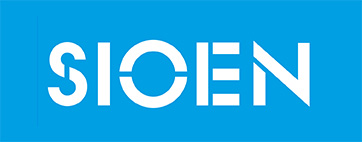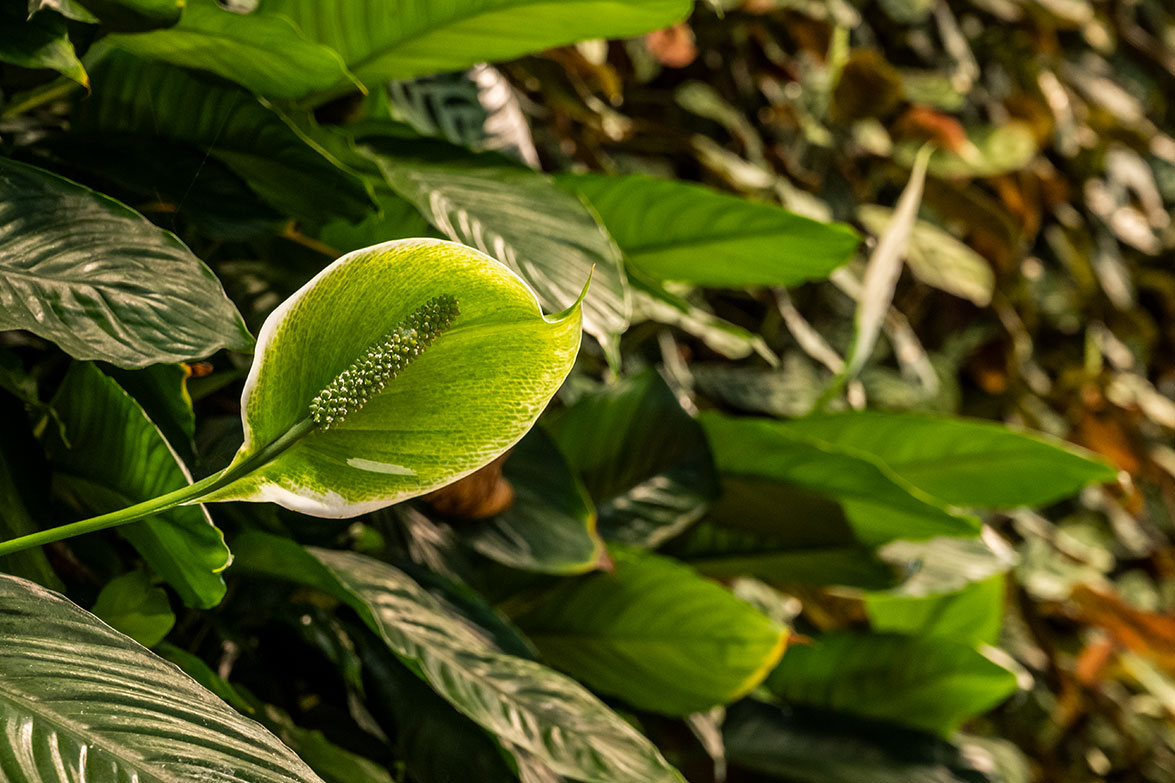An innovative type of urban furniture was presented in Merelbeke, Belgium. The green cycle bank combines different functions: it is a covered bicycle shed with charging facilities for e-bikes and at the same time a cooling seat thanks to the vertical green wall and the water-buffering green roof.
The green bike bench came about through close cooperation between the Province of East Flanders, local government Merelbeke, and manufacturer SIOEN in partnership with the street furniture manufacturer Abribo NV. The first edition is part of the European Cool Towns project, which charts heat stress in cities and towns and puts forward innovative measures for climate adaptation.
Cooling challenges
As a company, SIOEN aims to respond to social needs and questions. A major challenge for cities and municipalities is climate change linked to urban heat island effect. Due to climate change, we are experiencing more frequent heat days and heat waves. Urban centres then become warmer than the outlying areas. Pavements, both vertical through buildings and horizontal through streets, squares, car parks, etc. absorb heat and retain it for a long time. As a result, urban centres do not cool down sufficiently in the evening and at night. This creates heat islands that adversely affect our physical and mental health.
All partners looked for valuable alternatives that bring cooling, water collection and recreation. "This bicycle bank shows how we can adapt the layout of public spaces in cities and towns to the changing climate through innovation and technological advancement. Such a green oasis, however limited in size, forms a heat-resistant spot in a paved environment. Here we optimally integrate vertical greenery, cooling water elements, rainwater buffering and carbon-free bicycle mobility in one space-saving construction." Commissioner Riet Gillis, responsible for Climate and Mobility
Demonstrator in Merelbeke, Belgium
The paved square Driekoningenplein in Merelbeke was chosen as the location for this innovative concept. "The Driekoningenplein is the central spot in our municipality: near the town hall, cultural centre, trade centre, schools and underground car park. Embanking this square with extra green zones is not obvious. Therefore, we have experimented with a vertical green wall and a green roof above the bicycle shed. If this concept has sufficient cooling effect, it can easily be used elsewhere. I am already curious about the measurement results. With this measure, everything comes together nicely: sustainable mobility, and climate and adaptation plans." Alderman Tim De Keukelaere, responsible for Environment and Sustainability.
The Provincial Centre for Environmental Research of the Province of East Flanders will carry out heat stress measurements on the Driekoningenplein in the summer of 2022. The cooling effect of a living green wall on the emotional temperature of passers-by will be measured.
INNOVATIVE CONCEPT
This prototype city furniture is unique in Europe and was co-designed by manufacturer Sioen, specialist in technological textile applications including Greentexx, an innovative green wall that cleverly combines nature and technology.
Greentexx green walls are nowadays often mounted on facades, internal walls or as freestanding walls. Due to its intuitive design and fire certification, the product can be applied in various indoor and outdoor environments. In outdoor applications, a Greentexx green façade contributes to, among other things, urban biodiversity, cooling of the wind chill to 5°C, and a more pleasant greener cityscape. In addition, the plants in the green walls act as a wind retardant and acoustic dampening intervention. In indoor applications, green walls contribute to a more pleasant (greener) working environment and work as a passive cooling system through the use of fresh rainwater.
It is generally known that the mental health and physical recovery of people becomes faster and better in green living environments. Greentexx makes greening the environment possible where this is not possible with ground-mounted greenery. And it makes a stronger contribution to urban biodiversity through the wide and diverse range of flowering plants used compared to the often monotonous ground-based green walls.
In this application, we were able to use the results of our preliminary studies and earlier prototypes to apply Greentexx in a 'surface-mounted' concept, whereby no underground water pipes and reservoirs had to be installed. The surface-mounted approach allows these green parking spaces and green benches to be used more widely in the urban environment. Due to the large water reservoir in the bench, the set-up also saves costs, as cities and municipalities have to water less often than conventional flower baskets and flower boxes in the street.
"At SIOEN, innovation and sustainable enterprise are of paramount importance. SIOEN is constantly looking for innovative and sustainable ways to contribute to society through technical textiles. By applying our Greentexx green façade fabric, this bicycle shed contributes to urban greening, cooling and biodiversity. We are delighted that, together with our partner and street furniture manufacturer Abribo, we were able to realise this innovative project in Merelbeke. We plan to install a second variant - a green bench without bicycle storage - in Ostend later this year. Thanks to the financial intervention of Europe and the cooperation of the project partners, the development of such prototypes is feasible for our company."
Benny Pycke, Product Manager, SIOEN Industries NV
CLIMATE FIGURES TAILORED TO LOCAL AUTHORITIES
Of the total land area of the municipality of Merelbeke, 17.3% is paved. This is higher than the average in East Flanders (15.4%) and Flanders (16%). In Merelbeke houses and gardens account for 43.2% of the total amount of hard surfaces, transport infrastructure for 25.4%. The land take there amounts to 42.6%; in East Flanders it is 33.3%. Thanks to the presence of the Makegemse bossen, the Sint-Annabos and the provincial domain Het Gentbos, 24% of the surface area in Merelbeke is green nature reserve. This compares to 11.7% in East Flanders and 15.2% in the Flemish Region.
The average summer temperature in Merelbeke in the current climate is 17°C and could rise to 25.1°C in 2100. The average number of days with a maximum temperature of 30°C or more in Merelbeke increases from three days in the current climate to 32.8 days in 2100.
Such trend-setting figures are available via the climate reports of Provincies.incijfers.be. The five Flemish provinces, including the Province of East Flanders, make relevant figures available to local governments through this online database.
The local climate adaptation report offers, among other things, current figures on the degree of hardship and neighbourhood greenery for each Flemish municipality or city. The report climate scenario translates the worldwide climate predictions of the IPCC (Intergovernmental Panel on Climate Change) to the local level, including expected heat days and waves.
Contacts
Product Manager & Project Leader Cool Towns, SIOEN Industries
+32479 87 00 76
Other partners:
Riet Gillisdeputy for Climate and Mobility - 09 267 81 44
Leen Meheus (measurements) Provincial Centre for Environmental Research - 0476 93 20 41
Mechtild Zoeter Vanpoucke (adaptation measures) Provincial Centre for Environmental Research- 0475 63 42 55
vo Adam diensthoofd Environment, Local Government Merelbeke - ivo.adam@merelbeke.be - 09 210 32 71





